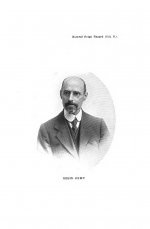Björn Bergenholtz
(former alias "Calalp")

Here's some additional info (and some possibly undesired confusion) on Robert 'Robin' Kemp [junior] (born 1871/76? – ca.1920) ...
Apparently born in London, 19 October ... but in 1871, or in 1876? (contradictory years, in various sources! See, for example, the quote below) ... and when did he pass away? That´s the questions, and the reasons for this thread ...
It looks like his mother Ellen Home was illustrator of Childrens books (a colleauge of mine!), at least according to Mathews, here. Maybe the full story is told in that issue of Mathews's Austral Avian Record 5 (5), p. 105? "With Portrait"! It looks like some kind of Obituary or In Memoriam (similar to several others, in earlier issues of the same Journal) ... It´s not found in BHL (Biodiversity Heritage Library), they only hold vol. 5, no.1, pp.1-32, from 1922. However; vol 5 (4), pp. 81-100, was published in 1926 (found here, end of volume). Vol 5 (5) seems to be the very last issue of Austral Avian Record and was probably published the year after, in 1927.
Anyone who have seen it? Or have full acess?
Björn
PS. This guy is commemorated in loads of birds (too many, far too many, to check ... at least for now); here.
... at least for now); here.
Apparently born in London, 19 October ... but in 1871, or in 1876? (contradictory years, in various sources! See, for example, the quote below) ... and when did he pass away? That´s the questions, and the reasons for this thread ...
Also see here and here. I assume he was called 'Robin' to avoid being mixed-up with his Father (and namesake).Authorized Forms Of Name Kemp; Robert (1876-c1920); Mammal Collector
[...]
Parallel Forms Of Name Robin Kemp
[,,,]
History Robert Kemp was the son of Robert Kemp, an optician, and was born at 60 Windsor Road, Islington, North London on 19 October 1871. In 1902 he became Assistant Accountant on the Railway Board in Sierra Leone where a new railway was being constructed and collected birds and mammals in his spare time. Among the three collections of birds he made there was at least one new species. During his home leave. [from here]
It looks like his mother Ellen Home was illustrator of Childrens books (a colleauge of mine!), at least according to Mathews, here. Maybe the full story is told in that issue of Mathews's Austral Avian Record 5 (5), p. 105? "With Portrait"! It looks like some kind of Obituary or In Memoriam (similar to several others, in earlier issues of the same Journal) ... It´s not found in BHL (Biodiversity Heritage Library), they only hold vol. 5, no.1, pp.1-32, from 1922. However; vol 5 (4), pp. 81-100, was published in 1926 (found here, end of volume). Vol 5 (5) seems to be the very last issue of Austral Avian Record and was probably published the year after, in 1927.
Anyone who have seen it? Or have full acess?
Björn
PS. This guy is commemorated in loads of birds (too many, far too many, to check








